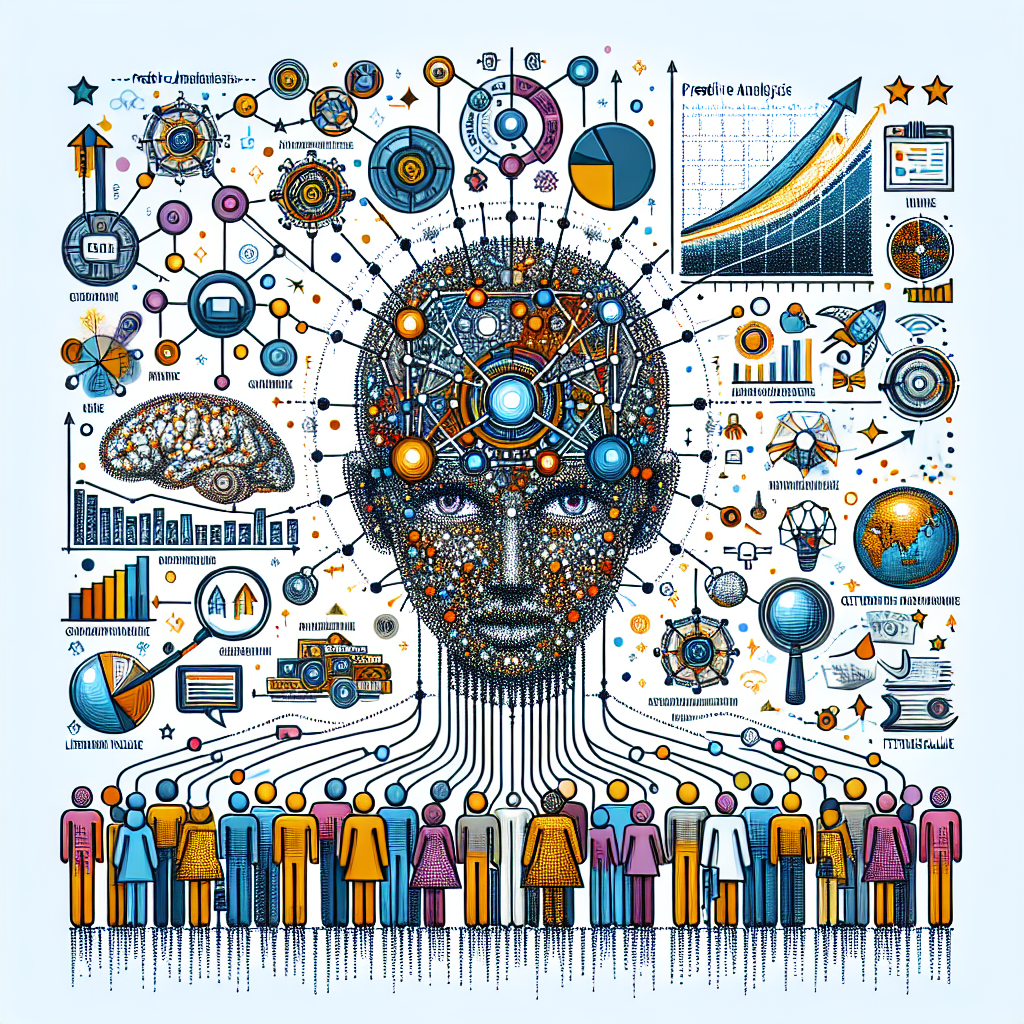In today’s digital age, businesses are constantly looking for ways to maximize their profits and retain customers for the long term. One way to achieve this is by predicting customer lifetime value (CLV) using artificial intelligence (AI) technology. AI-driven CLV prediction allows businesses to accurately forecast the future value of each customer, enabling them to tailor their marketing strategies and customer retention efforts accordingly.
What is Customer Lifetime Value (CLV)?
Customer Lifetime Value (CLV) is a metric that represents the total profit a company expects to earn from a customer over the course of their relationship. CLV takes into account factors such as purchase frequency, average order value, and customer retention rate to determine the value of each customer to the business. By understanding the CLV of their customers, businesses can make informed decisions about how much to invest in acquiring and retaining customers.
Why is CLV Prediction Important?
CLV prediction is important for several reasons. First and foremost, it allows businesses to identify their most valuable customers and focus their marketing efforts on retaining and upselling to those customers. By predicting CLV, businesses can also determine how much they should be willing to spend to acquire new customers, as well as which customer segments are most likely to churn.
AI-Driven CLV Prediction
AI-driven CLV prediction uses machine learning algorithms to analyze historical customer data and predict future customer behavior. These algorithms can take into account a wide range of factors, including purchase history, demographic information, website interactions, and more. By analyzing these factors, AI can generate accurate predictions of each customer’s future value to the business.
Benefits of AI-Driven CLV Prediction
There are several benefits to using AI-driven CLV prediction. One of the key benefits is accuracy. AI algorithms can analyze large amounts of data and identify patterns that humans may not be able to see. This allows businesses to make more accurate predictions about their customers’ future behavior.
Another benefit of AI-driven CLV prediction is scalability. AI algorithms can process large amounts of data quickly and efficiently, making it possible to generate CLV predictions for thousands or even millions of customers. This scalability allows businesses to tailor their marketing strategies to individual customers, maximizing the value of each customer relationship.
AI-driven CLV prediction also enables businesses to automate many aspects of their marketing and customer retention efforts. By using AI to predict customer behavior, businesses can automatically trigger personalized marketing campaigns, loyalty programs, and other initiatives designed to retain and upsell to their most valuable customers.
Challenges of AI-Driven CLV Prediction
While AI-driven CLV prediction offers many benefits, there are also challenges to consider. One of the main challenges is data quality. AI algorithms rely on high-quality data to make accurate predictions. If the data used to train the AI model is incomplete or inaccurate, the predictions generated by the model may be unreliable.
Another challenge is interpretability. AI algorithms can be complex and difficult to interpret, making it challenging for businesses to understand how the predictions are being generated. This lack of transparency can make it difficult for businesses to trust the predictions and incorporate them into their decision-making processes.
FAQs
Q: How can businesses use AI-driven CLV prediction to improve their marketing strategies?
A: Businesses can use AI-driven CLV prediction to identify their most valuable customers, tailor their marketing messages to individual customer segments, and automate personalized marketing campaigns. By understanding the CLV of their customers, businesses can optimize their marketing strategies to maximize customer lifetime value.
Q: What are some common use cases for AI-driven CLV prediction?
A: Some common use cases for AI-driven CLV prediction include customer segmentation, churn prediction, and personalized marketing campaigns. By using AI to predict CLV, businesses can identify high-value customer segments, predict which customers are most likely to churn, and automate personalized marketing campaigns to retain and upsell to their most valuable customers.
Q: How can businesses ensure the accuracy of their AI-driven CLV predictions?
A: To ensure the accuracy of their AI-driven CLV predictions, businesses should focus on data quality, model training, and evaluation. It is important to use high-quality data to train the AI model, regularly update the model with new data, and evaluate the model’s performance to ensure that the predictions are accurate and reliable.
In conclusion, AI-driven CLV prediction offers businesses a powerful tool for maximizing customer lifetime value and improving customer retention. By using AI algorithms to analyze customer data and predict future behavior, businesses can tailor their marketing strategies to individual customers, automate personalized marketing campaigns, and optimize their customer retention efforts. While there are challenges to consider, such as data quality and interpretability, the benefits of AI-driven CLV prediction far outweigh the drawbacks. Businesses that embrace AI-driven CLV prediction stand to gain a competitive advantage in today’s fast-paced, data-driven marketplace.

